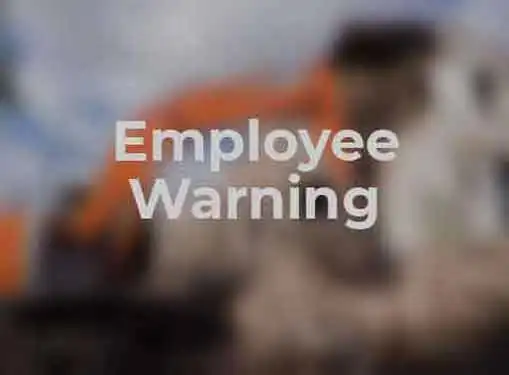Managing Employees
Employee Warning Notices
Employee warning notices are an important first step in employee discipline. With the right approach, you can use them to stop minor issues from becoming major problems in the workplace.
Employee disciplinary policies are essential in today's workplace.

The days of informal conversations and undocumented discipline are long gone. If you don't have a carefully designed discipline strategy, your company may have considerable legal exposure.
Employee warning notices are often the first stop in what may eventually become a prolonged discipline process. In many cases, warning notices provide sufficient incentives for the employee to improve performance or to correct inappropriate behaviors. However, in other instances warning letters lay the foundation for later termination.
Since the information contained in your company's employee warning notices may have legal consequences down the road, warning forms and letters should be standardized throughout the organization. Here are a few things to consider when it's time to create standard employee warning notices in your small business.
- Nature of notice. Employee warning notices come in several different forms, so it's important for your form or letter to accurately identify its nature. First warning letters are a proper follow-up to an initial disciplinary conversation. Second warning letters, on the other hand, may be the final notice before termination.
- Background. If this isn't the first time the problem has been addressed, the warning notice or form should have a space for the supervisor to provide a brief recitation of background history including meetings, notices and action items.
- Problem identification. Your company's employee warning notices should provide ample space for supervisors to identify the precise nature of the problem. You will also want to leave blank space in this section so the supervisor can document the details of the events that led up to the current disciplinary action.
- Corrective actions. The corrective action section describes the action steps that are required to correct the current behavior or performance issue. If these steps involve management or other supervisors, it's critical to make sure everyone understands their role in the process.
- Deadlines. Employee warning notices have to articulate deadlines for improvement and the consequences if those deadlines aren't met. Instruct supervisors to be realistic about these deadlines since they can have legal ramifications down the road.
- Follow-up statement. A good warning notice officially states appropriate follow-up procedures in the form of monitoring, probation or other management activities.
Share this article
Additional Resources for Entrepreneurs




Conversation Board
We greatly appreciate any advice you can provide on this topic. Please contribute your insights on this topic so others can benefit.